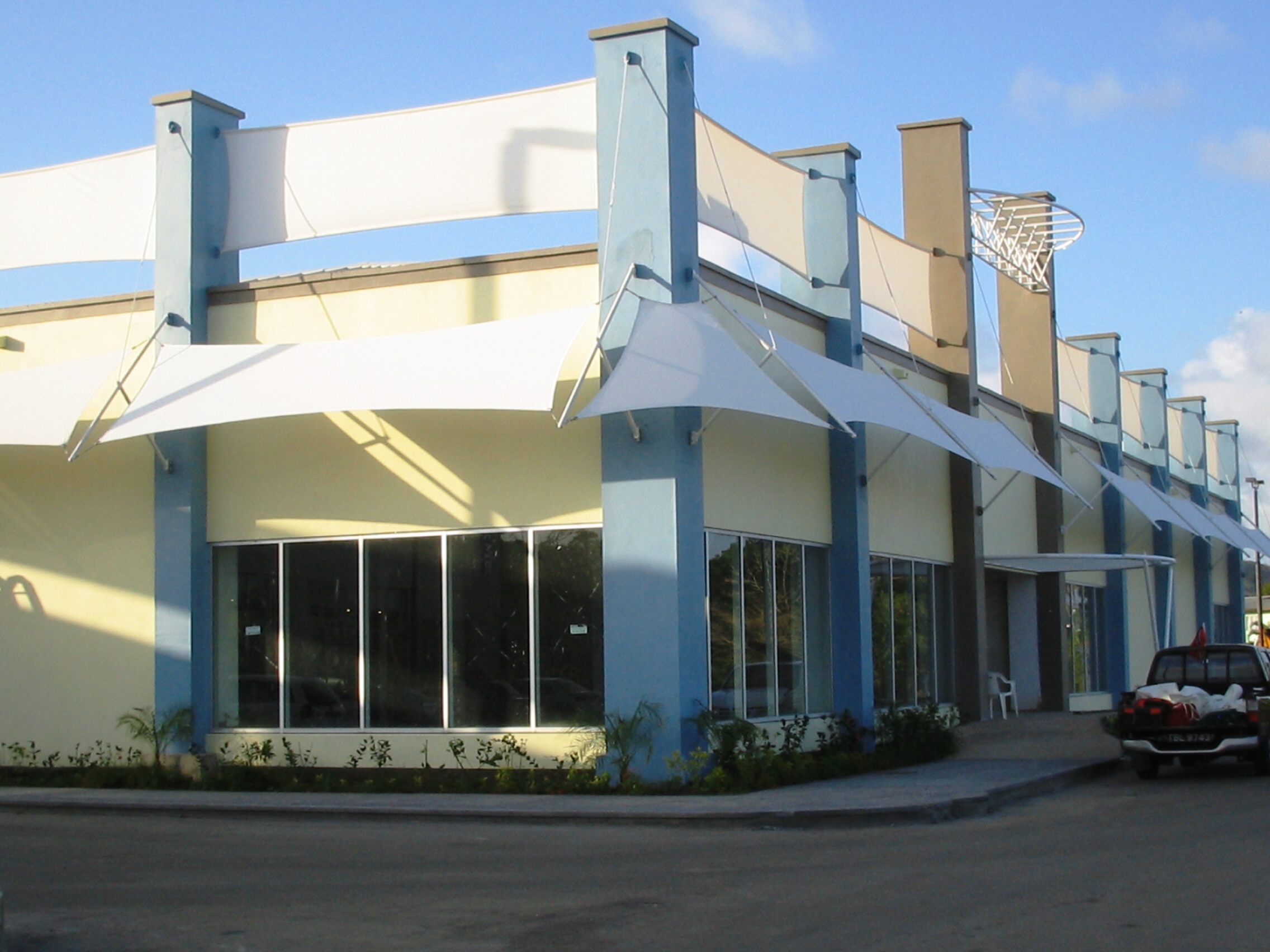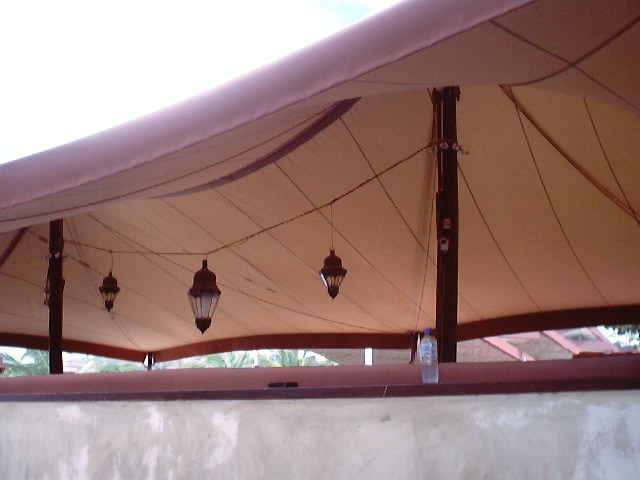Tensile Structures
Available Styles: Conical, Hypar, Saddle, Ridge & Valley, Custom
Exterior Applications: Fabric roofs for airports, stadia, sporting pavilions, bus shelters, schools, outdoor gyms, car parks, entertainment centers, restaurants.
Interior Applications: Ceiling panels, displays, light diffusers.
Method: The fabric of a tensile structure is put under tension. It is not stretched into position. It is cut and bonded together to make its final shape. The fabric is then loaded during erection. This loading or tension, which is pre-engineered, is called pre-tension or pre-stress. The pre-tension is transmitted to a support system, which can be either closed or open, or a mixture of the two. An open system is best defined by having a cable around the perimeter of the fabric, this transmits the load to the support system. these loads can be massive and require large concrete tie-down blocks. A closed system is best defined by having rigid members around the edge. These are designed to counter the pre-tension put upon the fabric more like a conventional building. Closed system structures require smaller foundations. Both systems open and closed can be combined, which is particularly useful if one is trying to abut to a building and gain weather protect.
Typical Exterior Fabrics:
» PVC-Coated Polyester: this fabric is the least expensive option for large tensile structures, and has a design life of 15 to 20 years, due mainly to unltraviolet attack. Besides cost, it has the advantage of being very robust, easier to ship and erection can be demountable. It also comes in many colours.
» Teflon- or Silicon-Coated Fiberglass: Coated fiberglass has a much higher tensile strength than polyester; however, glass is brittle. To overcome this, the fibers are made to a very small diameter but are still subject to damage from repeated flexing. The advantage of fiberglass is that it is not vulnerable to ultra-violet attack which gives it a 30+ year design life. Both silicon and teflon are almost completely chemically inert, resistant to moisture and micro-organisms, and have good self-cleaning properties. Silicon glass is less expensive than the teflon-coated fiberglass, however the teflon has a better self-cleaning properties. The only disadvantage to using teflon is that it is difficult to handle and transport in large pieces because when sharply folded the teflon coating visibly “bruises.”
» Acrylic Canvas & PVC-Coated Polyester Mesh Fabrics are used for smaller tensile structures and also interior fabric structures and have a design life of 5 to 10 years. Acrylic canvas is available in 64 solid colours and PVC-coated polyester mesh is available in 50 colours.



